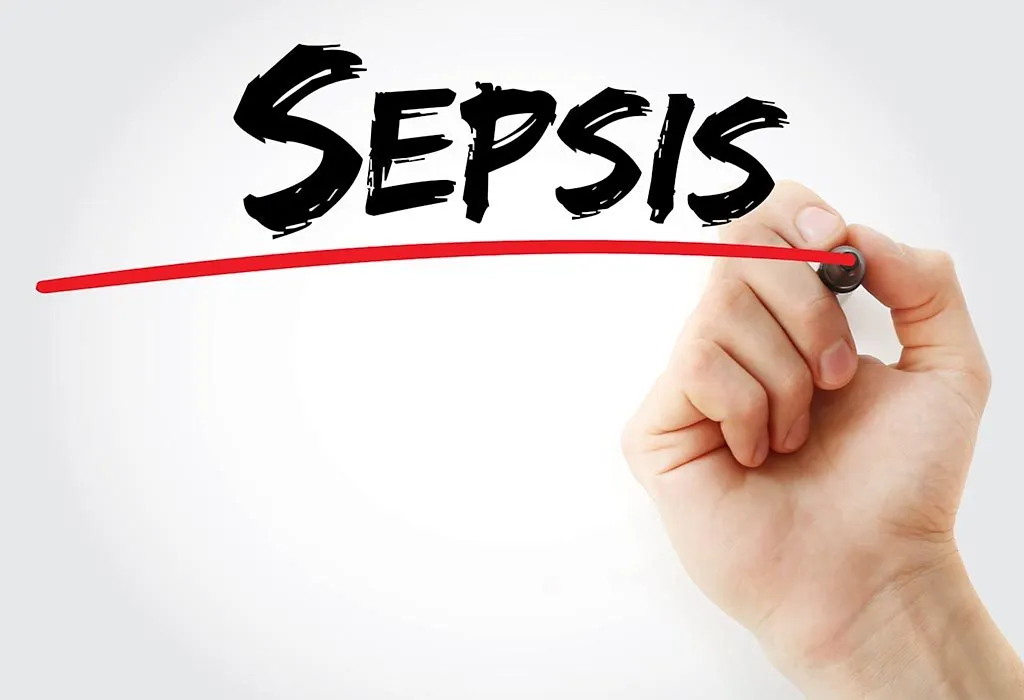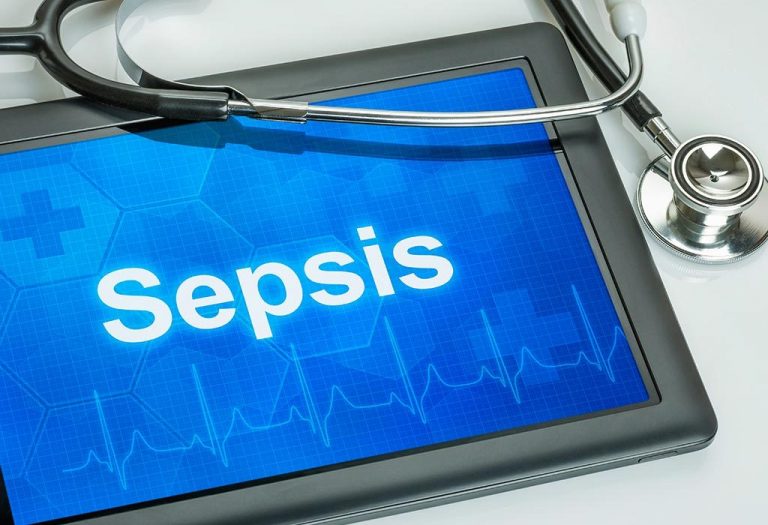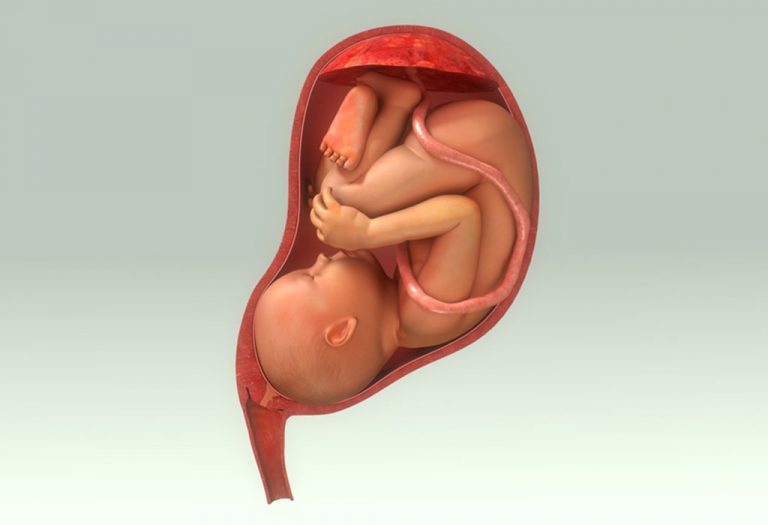Maternal Sepsis – Causes, Symptoms and Prevention

- What Is Sepsis?
- What Causes Blood Infection in Pregnancy?
- Signs and Symptoms of Maternal Sepsis
- Risks and Complications of Sepsis in Pregnancy
- How to Treat Blood Infection During Pregnancy?
- How to Prevent Sepsis During Pregnancy?
- When to Seek Medical Help?
- FAQs
During pregnancy, the maternal immune system undergoes various adaptations to support fetal development, sometimes increasing infection vulnerability. Blood infection, or sepsis, occurs when the body’s immune system releases chemicals into the bloodstream to fight an infection, triggering widespread inflammation that can lead to organ dysfunction and failure. Despite advancements in medical care, sepsis during pregnancy remains a significant cause of maternal morbidity and mortality worldwide. The condition can progress rapidly, leading to severe complications if not promptly recognised and treated. This article explores the causes, symptoms, diagnosis, and management of sepsis during pregnancy, emphasising the importance of timely medical intervention and prenatal care.
What Is Sepsis?
In common words, sepsis is blood poisoning or an infection of the blood. It is caused by the body’s response to an infection in body parts like the lungs, urinary tract, bladder, kidney, stomach, etc. When the bacteria enter the bloodstream, it is called sepsis.
In medical terms, the body releases certain chemicals in the blood to fight any infection. When the body’s immunological system malfunctions, these chemicals trigger widespread inflammatory conditions throughout the body, and sepsis occurs. It affects all other body organs and the entire bloodstream because it disrupts the supply of blood to various vital organs (3).
In its extreme form, it can cause septic shock, a condition in which the blood pressure falls to dangerous levels. This, in turn, can lead to multiple organ failure and death (6).
Infection in the blood during pregnancy is called maternal sepsis. One-third of pregnant women all over the world suffer from maternal sepsis. It can lead to severe complications if left undiagnosed and not treated in time.
There are also chances that about 15-30% of the sepsis-causing pathogen will pass onto the baby during delivery, and the baby will be born with the infection as well. That is why sepsis and pregnancy are topics that pregnant women and their families should be well aware of.
However, the incidence of death due to sepsis in pregnant women is much lesser (compared to the general sepsis patients) due to their younger age.

What Causes Blood Infection in Pregnancy?
There has also been an overall rise in the number of sepsis cases these days because of higher life expectancy, more invasive medical interventions, growing immunological disorders, resistance to pathogens, etc. There has been an increase in sepsis during pregnancy as well. Here are a few causes of maternal sepsis in pregnancy:
- Age of conception: Many women conceiving are over 40 years old, and they have other underlying health issues like type 2 diabetes, obesity, and hypertension (1).
- Artificial insemination: New technologies aiding insemination and new medicines for the foetus are also associated with Sepsis.
- Abortions: Abortions, when not performed with care, especially if the patient has low immunity is low etc., can cause infections and even sepsis. If you notice symptoms like fatigue, vaginal discharge, recurring fever, cough, etc. after an abortion, please consult your doctor.
- Long delivery: If the delivery has been long, complicated, induced or via cesarean, there are higher chances of developing sepsis (2).
- Other illness: If you have other acute illness/infection during pregnancy and you show signs of associated complications, then you are prone to sepsis.
Signs and Symptoms of Maternal Sepsis
Sepsis spreads very fast during pregnancy. There may be no prolonged symptoms, and suddenly, the expecting woman may fall sick. It is important to understand and watch out for the signs and symptoms, though please note that these may also indicate other diseases as well (8):
- Fever (Over 38.3ºC or below 36ºC) accompanied by chills and tremors
- An increased heart rate of more than 90 beats/min
- Confused mental state
- Acute headache
- Excessive sleepiness
- Acute pain.
- Marked oedema i.e. accumulation of fluid in the body indicated by swelling of body parts (legs, hands, face, belly etc)
- High blood sugar, typically over >110mg/dL or 7.7mmol/L
- Low urine output below 0.5mL/kg/h
- Infection in placenta or uterus that is not healing
- You have some other infection and you witness sudden rapid breathing and breathlessness
- You have conducted diagnostic tests for white blood cells and the results are not within the normal range
- Acute diarrhoea, muscle pain, fainting, vomiting, nausea and/or cold skin
- You have an infection and you have preterm breakage of the sac.
Risks and Complications of Sepsis in Pregnancy
Sepsis during pregnancy poses significant risks and complications that can impact both the mother and the unborn child. Here are a few of the serious outcomes associated with this condition:
1. Maternal Organ Failure
Sepsis can lead to the failure of vital organs such as the kidneys, liver, and lungs. This can result in severe complications, including acute respiratory distress syndrome (ARDS), acute kidney injury, and liver dysfunction, all of which can jeopardise both maternal and fetal health.
2. Preterm Labour
Sepsis increases the risk of preterm labour, where the baby is born before 37 weeks of gestation. Preterm birth can lead to a range of complications for the baby, including respiratory problems, developmental delays, and increased susceptibility to infections.
3. Long-Term Health Issues
Survivors of sepsis may face long-term health issues, including chronic fatigue, cognitive impairments, or psychological effects such as post-traumatic stress disorder (PTSD). The recovery process can be challenging and may require ongoing medical and psychological support (7).
4. Increased Risk of Future Pregnancies
Women who have had sepsis during a previous pregnancy may be at increased risk for complications in future pregnancies. This includes a higher likelihood of recurrent infections or other pregnancy-related complications, necessitating careful monitoring and management in subsequent pregnancies.
How to Treat Blood Infection During Pregnancy?
Pregnancy and sepsis together present a unique challenge as the physiological changes in the immune system during pregnancy can increase the risk of severe infections, necessitating prompt treatment to protect the health of both mother and baby. Treatment involves restoring tissue functions, cell metabolism, oxygen circulation, and the safety of the foetus. Treatment should ideally be done in the ICU. Here are a few ways to do it (9):
- Antibiotics: Sepsis in its early stages can be treated with only antibiotics. Typically, one antibiotic is used to prevent resistance. In genital sepsis, two to three antibiotics are combined. In polymicrobial infections, broad-spectrum antibiotics like penicillin, aminoglycoside, clindamycin, vancomycin, or piperacillin-tazobactam are used. This must be done with caution because antibiotics often change their properties in pregnant women, and some antibiotics are harmful to the foetus.
- Intravenous fluids: These are often given but with caution so that there is no excess fluid infusion that ideally should be looked at after the first 6 hours of the start of this treatment. Albumin could also be given to such patients under certain medical conditions. Side effects of this treatment could be bleeding and kidney dysfunction.
- Medications: Dopamine and noradrenaline are used to control uteroplacental blood flow while the mother is being treated. These drugs must be administered with caution to keep the baby stable. According to one study, noradrenaline is the preferred to reduce side effects.
- Oxygen supply: This is required when sepsis affects the lungs and results in breathing problems.
Oxygen can be supplied with:- Nasal cannula
- Nebulizers
- In severe cases via invasive mechanical ventilation
In pregnant women, oxygen saturation must be 95%, not 90%, as in general sepsis patients. This is important to prevent the high chances of extreme side effects on the foetus.
How to Prevent Sepsis During Pregnancy?
Here’s how to lower your chances of contracting blood infection during pregnancy.
- Stay Away From People Who Are Sick: Avoid contracting infections by staying away from unwell people, avoiding outside food, etc.
- Maintain Good Hygiene: Always wash your hands thoroughly before cooking and eating (4).
- Get Vaccinated: Take your vaccines on time.
- Seek Medical Help: If you suspect an infection, seek immediate medical attention. Early diagnosis and treatment can help prevent the spread of infection to the blood.
- Be Careful If You Have Any Medical Condition: If you have diabetes or cancer, younger women must be cautious about personal hygiene and infections because they already have a compromised immune system that increases the chances of sepsis.
When to Seek Medical Help?

Seek medical help in the following cases:
- If you have any of the following infections:
- Escherichia coli
- Hemophilus influenzae
- Klebsiella
- Enterobacter
- Proteus
- Pseudomonas
- Serratia
- Pneumococcus
- Streptococcus, groups A, B, and D
- Enterococcus
- Staphylococcus aureus
- Listeria monocytogenes
- Bacteroides
- Clostridium perfringens
- Fusobacterium
- Peptococcus
- Peptostreptococcus
- Pyelonephritis
- Malaria
- Listeriosis
- Viral hepatitis (E)
- Varicella pneumonia
- Coccidioidomycosis
- Aspiration pneumonia
- HIV-associated infections
- Toxoplasmosis
- Cytomegalovirus
- Gastrointestinal infections
- Disseminated herpes
(Please note this list may not be exhaustive)
- If you have done prescribed diagnostic tests that display:
- Acute/constant anaemia
- Abnormal count of White blood cells, Creatinine, Plasma C reactive protein, INR, Platelet count, Plasma procalcitonin, bilirubin or any other test reports
- If your blood pressure (using a blood pressure monitor) shows abnormal counts.
- If you feel respiratory problems associated with an infection, you can check your oxygen saturation at home with an oximeter (a device to measure oxygen in your body). If the readings are not normal, you should seek medical attention.
- If you have an infection and your urine flow decreases, your heart rate increases, you have breathing problems, and you have severe gastrointestinal issues that keep recurring.
- If there are blood coagulation problems that can be indicated if you get wounds and blood flow does not stop easily, there is blood in your bowels, easy bruising, nosebleeds, etc.
- You have abnormal vaginal discharge.
- If you have had an abortion that is not well performed and you have an infection.
- You have come back from the hospital and suspect a hospital-acquired infection.
- If you have any other severe illness that is not improving with prescribed medication.
FAQs
1. Are there specific risk factors that increase the likelihood of sepsis during pregnancy?
Yes, certain risk factors can increase the likelihood of sepsis during pregnancy. These include having a weakened immune system, chronic illnesses like diabetes or hypertension, a history of previous infections, and undergoing invasive procedures such as cesarean delivery. Women with these risk factors should be closely monitored for signs of infection.
2. How does sepsis during pregnancy affect postpartum recovery?
Sepsis can complicate postpartum recovery, potentially leading to longer hospital stays and increased risk of complications such as wound infections or delayed healing. Women recovering from sepsis may require additional support and monitoring to ensure that they fully recover and to manage any long-term effects on their health.
3. What are the long-term effects of sepsis for women who have experienced it during pregnancy?
Long-term effects of sepsis can vary but may include ongoing issues such as chronic fatigue, post-traumatic stress, or persistent organ dysfunction. Women who have experienced sepsis may require follow-up care to address any lingering health issues and to support their overall recovery and well-being (5).
Sepsis is a serious medical condition that requires immediate attention and intervention to protect the health and lives of both the mother and the unborn child. Prompt diagnosis, timely administration of antibiotics, and comprehensive prenatal care are essential in managing this condition effectively. Please adhere to all the above details because sepsis can also become a life threat if not identified and treated in time.
References/Resources:
1. MATERNAL SEPSIS: CAUSES, SYMPTOMS, AND SUPPORT; The UK Sepsis Trust; https://sepsistrust.org/get-support/maternal-sepsis/
2. McGuire. B; Maternal Sepsis: 5 Ways to Reduce Your Risk; The University of New Mexico; https://unmhealth.org/stories/2022/05/maternal-sepsis-five-ways-reduce-risk.html
3. Sepsis; World Health Organization; https://www.who.int/news-room/fact-sheets/detail/sepsis
4. Sepsis- Who can get it; NHS; https://www.nhs.uk/conditions/sepsis/who-can-get-it/
5. Sepsis- Treatment and recovery; NHS; https://www.nhs.uk/conditions/sepsis/treatment-and-recovery/
6. What Is Sepsis?; Sepsis Alliance; https://www.sepsis.org/sepsis-basics/what-is-sepsis/
7. Pregnancy & Childbirth; Sepsis Alliance; https://www.sepsis.org/sepsisand/pregnancy-childbirth/
8. How to spot maternal sepsis; NCT; https://www.nct.org.uk/pregnancy/worries-and-discomforts/symptoms-watch-out-for/how-spot-maternal-sepsis
9. Cordioli. R. L, Cordioli. E, Negrini. R, Silva. E; Sepsis and pregnancy: do we know how to treat this situation?; PubMed Central; https://www.ncbi.nlm.nih.gov/pmc/articles/PMC4031877/
Also Read:
Yeast Infection in Pregnancy
Trichomoniasis while Pregnant
Chorioamnionitis when Pregnancy
Torch Infection during Pregnancy
Was This Article Helpful?
Parenting is a huge responsibility, for you as a caregiver, but also for us as a parenting content platform. We understand that and take our responsibility of creating credible content seriously. FirstCry Parenting articles are written and published only after extensive research using factually sound references to deliver quality content that is accurate, validated by experts, and completely reliable. To understand how we go about creating content that is credible, read our editorial policy here.
























